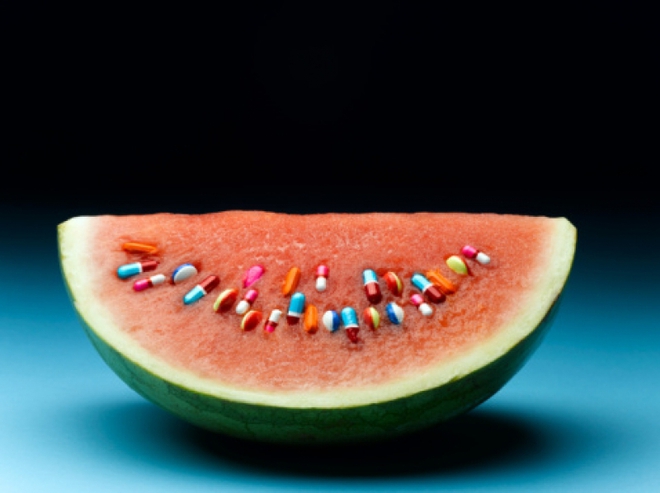L-Citrulline Malate (CM) is still a mystery to most of us in the U.s. It’s been overshadowed by other supplements like creatine, beta alanine, and NO powders. For those that have researched L-Citrulline Malate, the large majority have classified it as a supplement only for endurance athletes. That’s about to change!
What L-Citrulline Malate Does
 Although the exact mechanism hasn’t been determined just yet for LL-Citrulline Malate, researchers have proposed at least 3 different ways that L-Citrulline Malate can potentially improve performance: better recovery, improved work capacity, and reduced muscle soreness. Because this isn’t a research paper, I won’t go into too much of the science behind L-Citrulline Malate, as it gets pretty deep when you start discussing the Krebs cycle, pH balance, and the formation of nitric oxide. Here is a quick “unscientific” overview of the possible mechanisms:
Although the exact mechanism hasn’t been determined just yet for LL-Citrulline Malate, researchers have proposed at least 3 different ways that L-Citrulline Malate can potentially improve performance: better recovery, improved work capacity, and reduced muscle soreness. Because this isn’t a research paper, I won’t go into too much of the science behind L-Citrulline Malate, as it gets pretty deep when you start discussing the Krebs cycle, pH balance, and the formation of nitric oxide. Here is a quick “unscientific” overview of the possible mechanisms:
- Potentially increases nitric oxide production.
- Potentially improves the removal of ammonia, which is one of the many causes of fatigue.
- Potentially improves the efficiency of the Krebs cycle by providing important intermediates for key reactions.
What to Expect with L-Citrulline Malate
Unlike creatine, L-Citrulline Malate’s effects are mild and indirect. A reduction in muscle soreness is probably the most noticeable immediate benefit. You should also notice an improvement in work capacity in workouts that involve high repetitions, intermediate/long time-under-tensions, and incomplete rest periods. Over time, the reduced muscle soreness, improved recovery, and improved work capacity should lead to improvements in performance (strength/power) and body compensation.
When to Take L-Citrulline Malate
The majority of studies suggest taking it 1 hour before your workout.
How Much L-Citrulline Malate Should I Take?
Studies have suggested anywhere from 3-10 grams of L-Citrulline Malate. We would suggest starting with 3 grams and adjusting accordingly. Because the effects of L-Citrulline Malate are mild, it may take some time to find the “sweet spot.”
The Downside of L-Citrulline Malate
Larger doses tend to cause stomach upset, so increase gradually. Unfortunately, if you aren’t an endurance athlete, its effects on body composition and performance (improved strength/power) may take some time, as the results will slowly come from improved work capacity/recovery.
The Inside Scoop on L-Citrulline Malate
Although this supplements lack the bells and whistles of creatine and arginine, in my opinion, it should be in your arsenal. I personally use it prior to my HIIT metabolic sessions along with creatine and beta alanine.
At first glance it may look like it would just benefit endurance athletes, but that’s not necessarily true. Even strength/power/bodybuilding athletes should be doing some kind of cardio/HIIT-type sessions within their program. CM will not only have a positive direct effect on those sessions (improvement in work capacity), but more importantly it will help prevent those sessions from interfering with your strength/power workouts by decreasing the reliance on the phosphocreatine energy pathway as well as improving recovery and reducing muscle soreness.
What L-Citrulline Malate Stacks Best With
Beta alanine, creatine monohydrate
